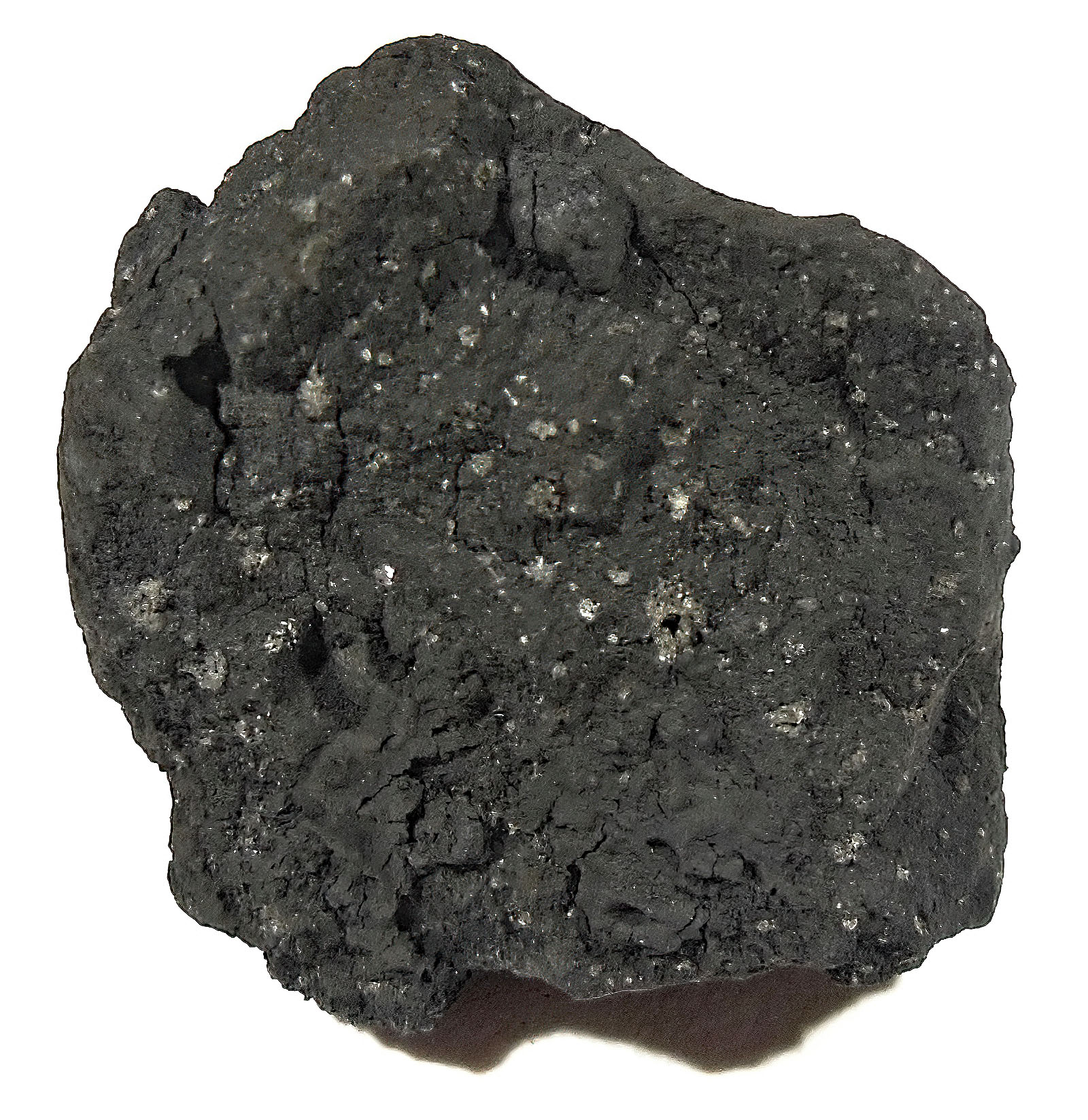|
Roll Overs:
#1
#2
#3
#4
#5
#6
#7
#8
|

|
|
Copyright (c) Steve Brittenham.
|
3.55 gram fragment with a small patch of fusion crust. C2-ung
TKW 10 kg. Observed fall 18 January 2000, in British Columbia , Canada.
   NASA NASA
Steve writes:
On Tuesday January 18, 2000, an estimated 4-5 meter wide meteoroid entered Earth’s atmosphere on a path approaching Canada. It’s prolonged fireball, seen by hundreds over the southern Yukon Territory and northern British Columbia, reduced its mass to only about 3% of its original 62 tons. Then, at 8:43 AM local time, several fragmentation events totaling an estimated 1.7 kilotons showered Canada’s frozen Tagish Lake with hundreds of meteorite fragments spread across a 16 by 4 km strewn field. Local witnesses described a sulfurous smell following the airburst, and while the widely observed fireball’s orangish-white and blue contrail lingered for 10 to 15 minutes, the vaporized stratospheric dust could be seen to the northwest of Edmonton for another 12 hours.
The passage of the fireball and its high-altitude explosions set off satellite sensors and was recorded on several seismographs. Its angle of entry was calculated from two calibrated photos taken minutes after the event, and along with U.S. Department of Defense satellite information and eyewitness accounts from Whitehorse (the capital city of Yukon), scientists were able to calculate an Apollo-type orbit extending to the outer reaches of the asteroid belt. Studies of the meteorite’s reflectance spectrum indicated it most likely originated from the D-type asteroid 773 Irmintraud, though some work suggests Tagish Lake’s parent body might actually be from the Kuiper Belt – where carbonaceous chondrite parent bodies initially formed – having become trapped between Mars and Jupiter after being pulled inward toward the Sun at a time when the gas giants were jostling for position. If true, Tagish Lake is the first meteorite recognized as not having originated in the asteroid belt.
No evidence of the meteorite was observed during the initial aerial over-flights of the Tagish Lake area, but on January 25th – a week after its fall – Jim Brook found the first pieces of the meteorite while driving home on the ice of the Taku Arm of Tagish Lake. Soon, approximately 1 kg of still frozen fragments were collected and transported to research facilities where, in collaboration with researchers from NASA, initial studies on the meteorite were performed. Snowfall continued to cover the remaining fragments until the following April, when a search effort was mounted by scientists from the University of Calgary and the University of Western Ontario. Many of the subsequently recovered fragments were covered by ice as deep as eight inches and had to be cut out in blocks. The majority of the recovered fragments were small, though the largest weighed about 2.3 kg. And since the meteorites landed on a frozen lake in the frigid temperatures of the Canadian winter, and because of their sterile collection and subsequent sub-zero storage by the university researchers, the fragments never reached temperatures where their trapped gases could boil off; consequently, Tagish Lake was the most pristine meteorite ever studied before it.
Tagish Lake’s interior exhibits a dark grey to almost black color with small light-colored inclusions. The 4.55-billion-year-old meteorite has been classified as a primitive type C2 ungrouped carbonaceous chondrite. It’s rich in organic materials and contains unaltered stellar dust granules that may have been part of the cloud of material that created our solar system. And like the famous Murchison carbonaceous chondrite, Tagish Lake also contains racemic amino acids, though in a concentration 100 times higher than any other meteorite found before it. But unlike Murchison, Tagish Lake’s soluble carbon-rich matrix has a more primitive, less complex chemistry that reflects a different evolutionary branch for carbon in our early solar system. Tagish Lake also contains more nano-diamonds than any other meteorites except ureilites. And the distribution of its dominant nano-diamond cages – soccer ball-like structures of hundreds of carbon atoms trapping noble gasses – is also different than Murchison’s (though the trapped gasses are similar).
Photos 1 through 6 show a 3.55 gram, 19 by 19 by 12 mm fragment with a small patch of fusion crust, which is magnified in Photo 7. Because my three Tagish Lake thin sections are rather lackluster, I’ve not bothered to create full gigapixel images of them, but instead have included Photo 8 ‘s montage of some of their more interesting chondrules (taken with different angles of polarization and magnifications). |
Click to view larger photos
#1
#2
#3
#4
#5
#6
#7
#8
|
Found at the arrow (green or red) on the map below
|
|
| |
Denis Gourgues
2/6/2021 9:15:17 AM |
#7 crazy color fusion crust !!!! |
Michael Mulgrew
2/2/2021 12:38:27 PM |
One of my top 10 favorite meteorites! |
Scott McGregor
2/2/2021 10:30:40 AM |
Thanks for the interesting background writeup! |
Chauncey Walden
2/2/2021 10:09:35 AM |
Really nice presentation. |
John Lutzon
2/2/2021 8:20:01 AM |
I'll pick door #8. Great images! Thanks Steve |
Andreas Ruh
2/2/2021 12:48:31 AM |
Magnificent fragment. Congrats ! |
| |
|